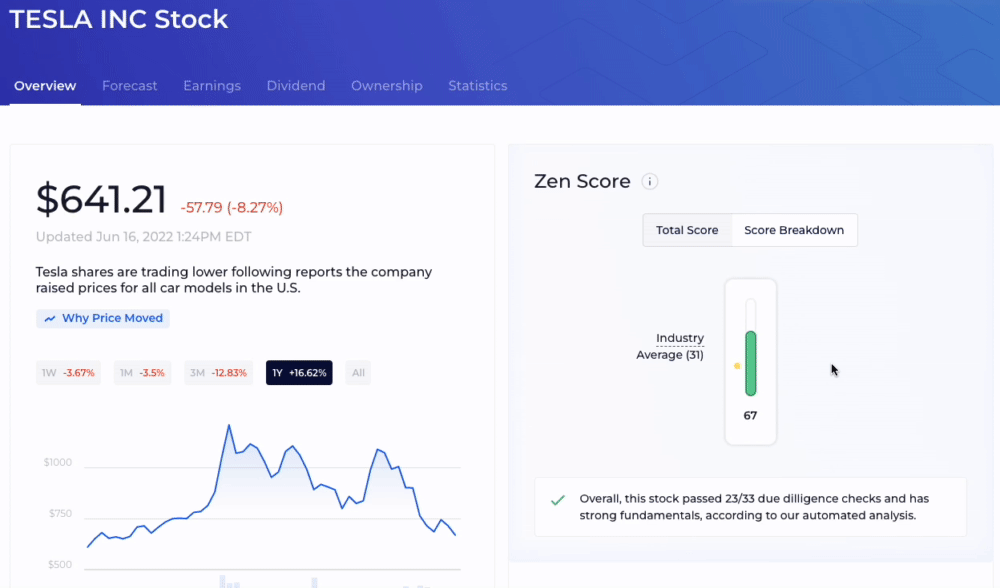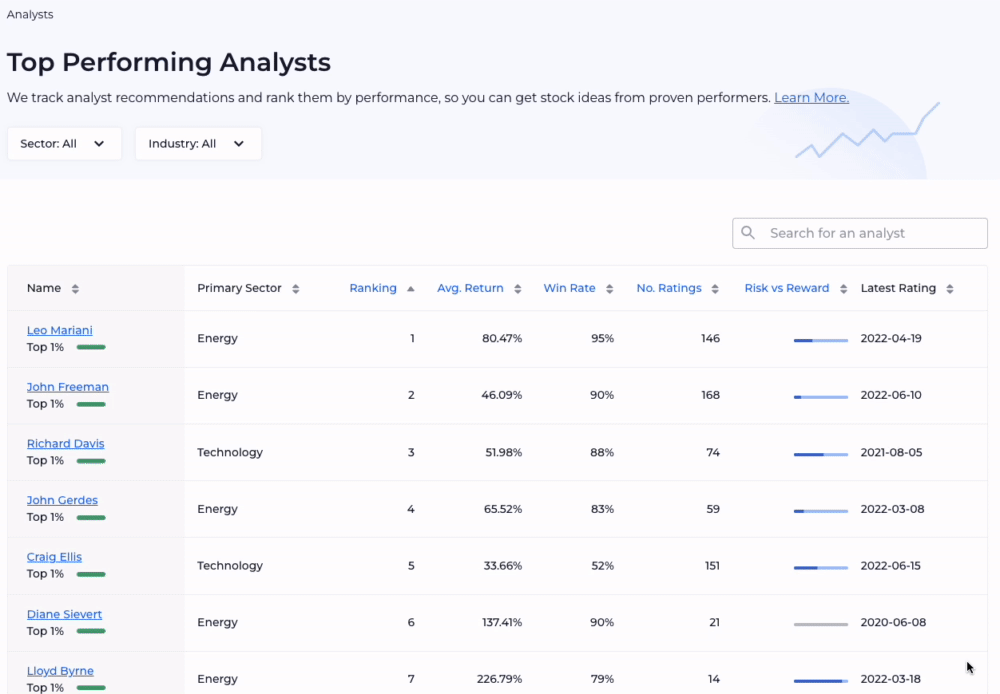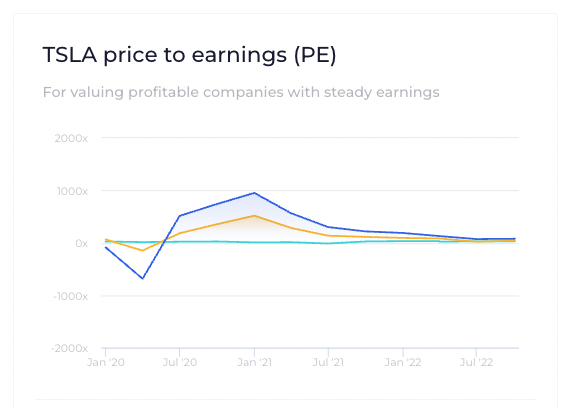What makes a stock go up or down?
Supply and demand.
Trillions of dollars worth of stock are bought and sold each day. It’s this buying and selling that sets stock prices.
What makes stocks go up and down?
So, how does a stock go up?
Imagine there are 1,000 people willing to buy one share of stock ABC for $10, but there are only 250 people willing to sell one share of ABC for $10.
The first 250 buyers each get a share for $10, but there are still 750 buyers who are still trying to buy. In order to draw out more willing sellers, these investors raise their offer price to $11.
This higher price persuades another 500 sellers, who weren’t willing to sell for $10, to let go of their shares.
ABC stock is now worth $11 per share – the price of the latest transaction.
But, there remain 250 buyers who don’t own ABC, so they raise their bid to $12 per share which persuades an extra 500 sellers to try and sell.
ABC stock is now worth $12 per share.
But there’s a problem: Only 250 buyers were willing to pay $12, and there are 500 sellers who want to sell at $12. The 250 sellers who didn’t get to sell now have a choice: Hold on to their shares, or ask a price lower than $12.
100 of these sellers decide to ask $11.75 for their shares – a price where 100 new buyers decide to buy ABC.
ABC stock is now worth $11.75 per share.
What just happened: Demand for ABC stock pushed the price up from $10 to $11, then up to $12. At $12, there were more sellers than buyers, some of whom decided to sell to buyers for $11.75, pushing the price back down to $11.75.
This is the basic operation of the stock market – it’s all really just about supply and demand.
In the stock market, however, these transactions are happening at a much larger scale. Thousands of securities trade hands in milliseconds, with many orders worth millions of dollars.
This balancing of supply and demand is what makes stocks go up and down and is what causes the stock market to go up and down.
Long story short: Fundamental analysis will help you determine which stocks are currently undervalued and will increase in value in the future.
WallStreetZen is built to help long-term, fundamental investors find hidden investing opportunities, even if you don’t have a finance degree.
Start a 14-day trial of WallStreetZen Premium for just $1 with the link below:
What affects the supply and demand of a particular stock?
High demand is the primary driver of what makes a stock price go up. The higher the demand, the higher the price investors will be willing to pay for each share (and the higher the price owners will be demanding to sell their shares).
Similarly, low demand is the primary driver of what makes a stock price go down.
But what causes high demand in the first place?
Market sentiment is the overall attitude of investors toward a particular security, industry, or market.
Broadly speaking, positive (or “bullish”) sentiment refers to increasing confidence about a company’s prospects or the potential for positive developments which will increase the desire (demand) for the stock and lift the stock price.
Contrarily, negative (or “bearish”) sentiment refers to decreasing confidence about a company’s prospects which will decrease the desire (demand) for the stock, leading to a lower stock price.
Factors that can affect sentiment toward a particular stock include earnings reports, upgrades and downgrades, business developments, and more.
WallStreetZen’s Watchlist Feed delivers this information daily, straight to your inbox. Stay up-to-date on company-specific and industry-wide news, insider transactions, analyst recommendations, and earnings events.
Demand for a particular stock can also be affected by sentiment toward its industry. For example, if Tesla reports record earnings, the stock prices of all EV companies may rise as investors gain confidence in the future of the EV industry. The opposite is also true if investors sour on an entire industry.
Furthermore, increasing confidence in the stock market as a whole can push up demand (and prices) for individual stocks across the board. Contrarily, if the economy weakens or appears to be weakening, every stock may suffer.
Think a stock is going down? Make sure you have the best broker for shorting stocks.
Why do stocks go up and down every second?
What makes a stock go up or down constantly?
We know that a stock price goes up or a stock price goes down because of supply and demand, and that the supply/demand balance is largely driven by market sentiment.
So when stock prices change every second, does that mean investors are changing their opinions every second? Maybe, but probably not.
The current stock price is the price at which the most recent transaction took place. Since many stocks have transactions that are happening every second the stock market is open, stock prices fluctuate every second.
Investors trade an average of 27 million shares of Tesla (NASDAQ: TSLA) each day. Every time a block of these shares is bought and sold, the stock price changes to reflect the latest transaction price.
Given the sheer number of transactions, stock prices tend to fluctuate every second, even if there’s been no change in market sentiment.
Short-term vs long-term stock price fluctuations
Short-term price fluctuations (a stock price going up or down) are caused by supply and demand – it’s the buying and selling of billions of shares each day by innumerable investors (for a number of logical and psychological reasons) that set stock prices.
(Interested in learning about how to predict stock prices?)
But how does a stock go up over time? What makes a stock go up and continue to go up for multiple years?
In the long term, however, the value of a stock is ultimately tied to the future cash flows generated by a company. The higher the future earnings, the more valuable the company will be worth in the future (thus, driving up its stock price).
Remember, stocks are just really big businesses in which anybody can invest. The total value of a company is its market capitalization (“market cap”), which can be calculated by multiplying the number of outstanding shares by the price per share.
If many investors believe a company’s earnings will grow in the future, they may be willing to pay a higher price for the stock today, regardless of its current earnings. The higher the growth potential, the more they’ll be willing to pay, which will push the stock price higher.
The Voting Machine vs the Weighing Machine
Short-term and long-term price fluctuations can be thought of in another light, as a tale of two market machines.
Legendary value investor Benjamin Graham came up with this concept, which was echoed by Warren Buffett:
“In the short run, the market is a voting machine but in the long run, it is a weighing machine.”
Warren buffett
This means, short-term share price fluctuations are largely due to the popularity or unpopularity of a stock.
However, long-term stock price trends will be governed by the actual substance (value) of the underlying business.
The message is clear: What matters in the long run is a company’s underlying business performance.
This is the basis for fundamental investing.
(Related: How do you know what stocks to buy?)
Fundamental investing
Fundamental investors perform analysis to determine how much a company is worth today based on its future earnings growth (its “fair value”). When a company trades below its fair value, thus being “undervalued”, they buy the stock.
As more investors discover the undervalued stock (increasing the demand) and buy it, the stock price will increase, giving the fundamental investors who bought in early a nice profit.
So, to make money investing, uncovering undervalued stocks is of paramount importance.
How to perform fundamental analysis: WallStreetZen
If you want to start finding undervalued opportunities of your own and get into stocks before they go up, you need to start doing fundamental analysis.
If you want to start finding undervalued opportunities of your own and get into stocks before they go up, you need to start doing fundamental analysis.
The process involves understanding the company, its operations, and its business models. You should also study the company’s financial reports, rivals, and debts. A thorough comparison of company debt is a must if you want to get an accurate understanding of its value.
Fundamental analysis of a company can help you determine a fair price of a stock and the total value of an investment.
The best website for fundamental analysis in 2025 is WallStreetZen.
WallStreetZen automates the fundamental analysis process inspired by legendary value investors like Warren Buffett, Benjamin Graham, and Peter Lynch.
With Zen Rating, you can instantly see a stock’s fundamental strengths and weaknesses:
Plus, Top Analysts gives you access to the latest stock picks of the very best performing analysts on Wall Street:
How do you think they make their buy/sell/hold recommendations and set price targets?
If you guessed fundamental analysis, you’d be right.
Beyond having a complete set of tools for fundamental analysis and access to the best performing Wall Street analysts, you can also access:
- Watchlists
- Stock Screener
- Stock Ideas
- News feeds
- An exclusive “Strong Buys” newsletter
Click here to read our review of the best fundamental analysis websites.
Where to invest $1,000 right now
If you want the fundamental analysis done for you (and an exceptional track record showing the effectiveness of that analysis), I’ve got the offer for you.
The Motley Fool’s Stock Advisor is an investing newsletter that has historically massively outperformed the market:

While a lot of focus is placed on daily fluctuations in stock prices, The Motley Fool has remained committed to investing based on long-term fundamentals. Based on the chart above, you can see how successful they’ve been.
If you had bought the following picks when The Motley Fool recommended them, you’d be up:
- Amazon, up 20,174% (recommended on 9/6/2004)
- Netflix, up 30,322% (recommended on 12/17/2004)
- And more…
(Returns as of 1/25/24. Past performance is no guarantee of future results. Individual investment results may vary. All investing involves risk of loss.)
And they just released another 2 picks, which you can get access to right here:
Stock Advisor (one of the best investment services) is typically $199/year, but the link above will take you to an introductory offer of just $99*.
You may also be interested in my Motley Fool Stock Advisor review.
FAQs:
Why do stocks go up and down constantly?
Stocks go up and down constantly because investors from all over the world are constantly buying and selling stocks.
Every stock price shows the exact price the last transaction took place at.
What makes a share price go up?
A share price rises when demand for the stock is increasing.
Where to Invest $1,000 Right Now?
Did you know that stocks rated as "Buy" by the Top Analysts in WallStreetZen's database beat the S&P500 by 98.4% last year?
Our July report reveals the 3 "Strong Buy" stocks that market-beating analysts predict will outperform over the next year.










